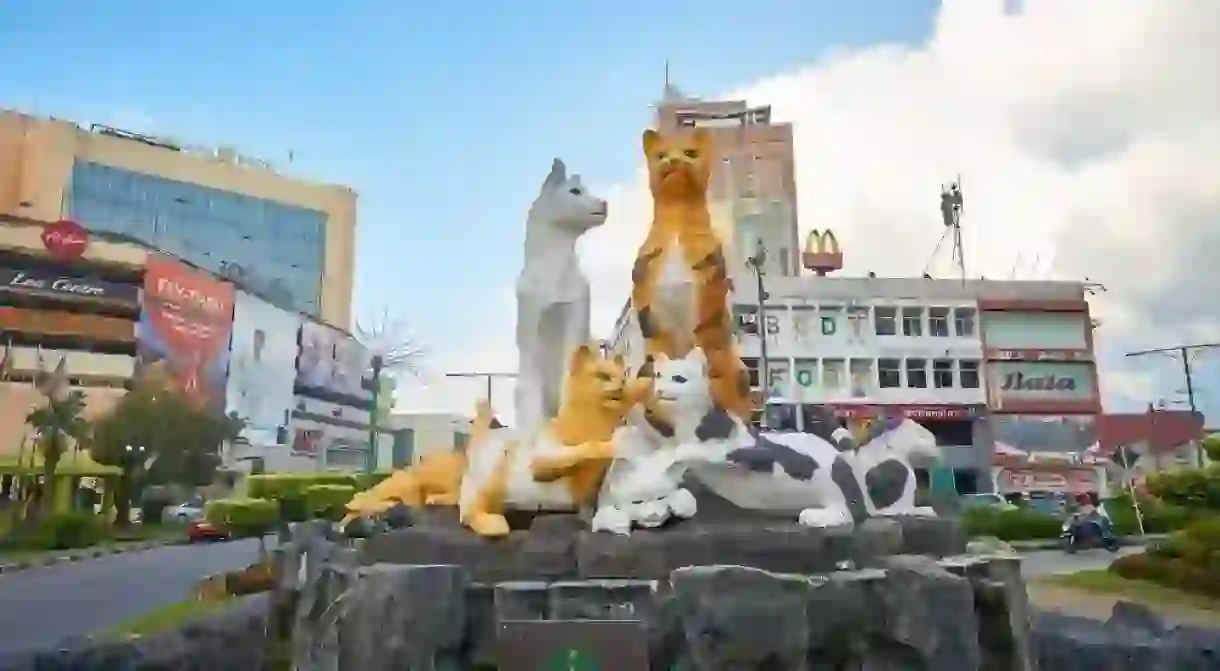Why Kuching, Malaysia is Called 'The City of Cats'

Kuching, formerly named Sarawak in the 19th century, translates to ‘cats’, earning it the affectionate nickname ‘City of Cats’. Nobody knows for sure why the state’s third capital was called Kuching and what originally connected today’s feline-centric city to their four-legged meowing friends.
Comical colonial mishaps?
It’s a bit of mystery as to why the city became Kuching. Some stories mix myth with age-old mishaps from communication barriers. Ask almost anyone in the tourist industry and they’ll speak of a funny misunderstanding between James Brooke and an indigenous tribesman. The First White Rajah in the middle of the 19th century, they’ll say, asked the name of a settlement. The tribesman thought he pointed to a cat and replied Kucing (pronounced the same way as Kuching).
A real city of cats?
Like James Cook’s misunderstanding with aboriginal Australians and the name kangaroo meaning ‘I don’t know’ in a local dialect, it’s not true. The same holds for the other tempting explanation: Lots of cats once lived along the Sarawak River and so the residents named it Kuching. While these explanations are adorable and tempting, they’re almost certainly false. Sarawakian Bahasa Melayu uses the term ‘pusak’ to refer to cats rather than the standard Bahasa Melayu ‘Kucing’. If they held any truth, wouldn’t the city be called ‘Pusak’ instead?

Was the City of Cats named after a fruit?
Perhaps the name comes from a type of lychee-like fruit called mata kucing which grows in the nearby hills. The literal translation from Bahasa Melayu is ‘Cat’s Eyes’. But for this to hold any truth it would be mata pusak in Sarawakian. Perhaps the fruit’s name was an import after Sarawak joined Malaysia in 1963 to help communication in a multi-lingual society? Since James Brooke renamed the city Kuching almost a century before in 1872, it suggests the ‘City of Cats’ isn’t named after a tropical fruit.

A more realistic explanation
In the 19th century, the British used the term ‘Cochin’ after the Indian port city to refer to any trading port. A variant of Cochin might have led to Kuching since there’s only a slight difference in pronunciation. Or maybe a small stream branching from the Sarawak River gave the name. Back then, naming a settlement after its location was common. But perhaps the most likely reason relates to the large Chinese population. Until the White Rajahs introduced pipes and plumbing, locals collected drinking water from a well. The Chinese referred to this long-forgotten old well as ‘Ku Ching’.
A city obsessed with cats
Does it matter where the name Kuching comes from? The ‘City of Cats’ has wholeheartedly embraced felines as their symbol. Cats are everywhere in Kuching from someone happily giving them food scraps at the coffeeshop to giant statues, street art and a museum dedicated to them. Kuching today really is the ‘City of Cats’.














